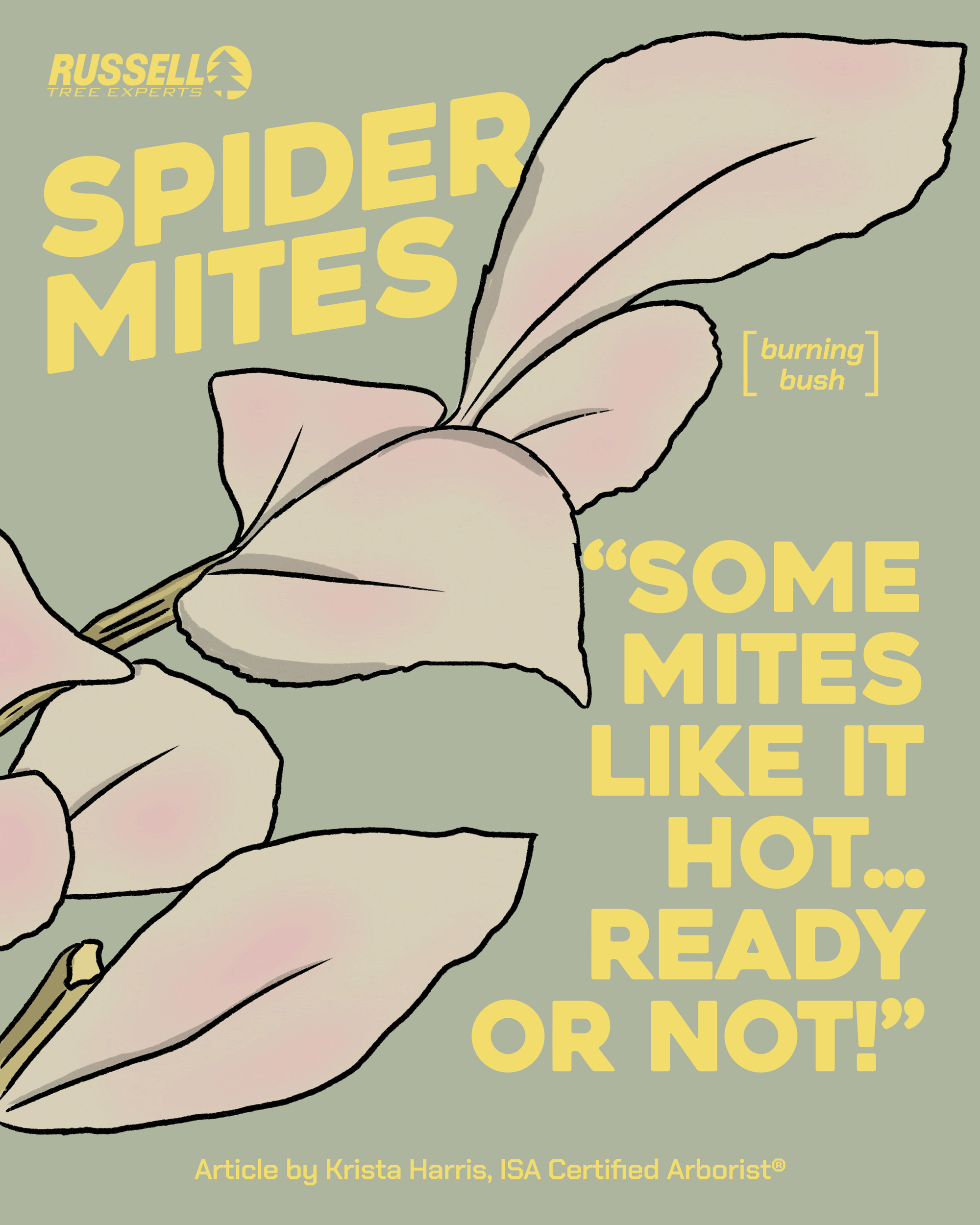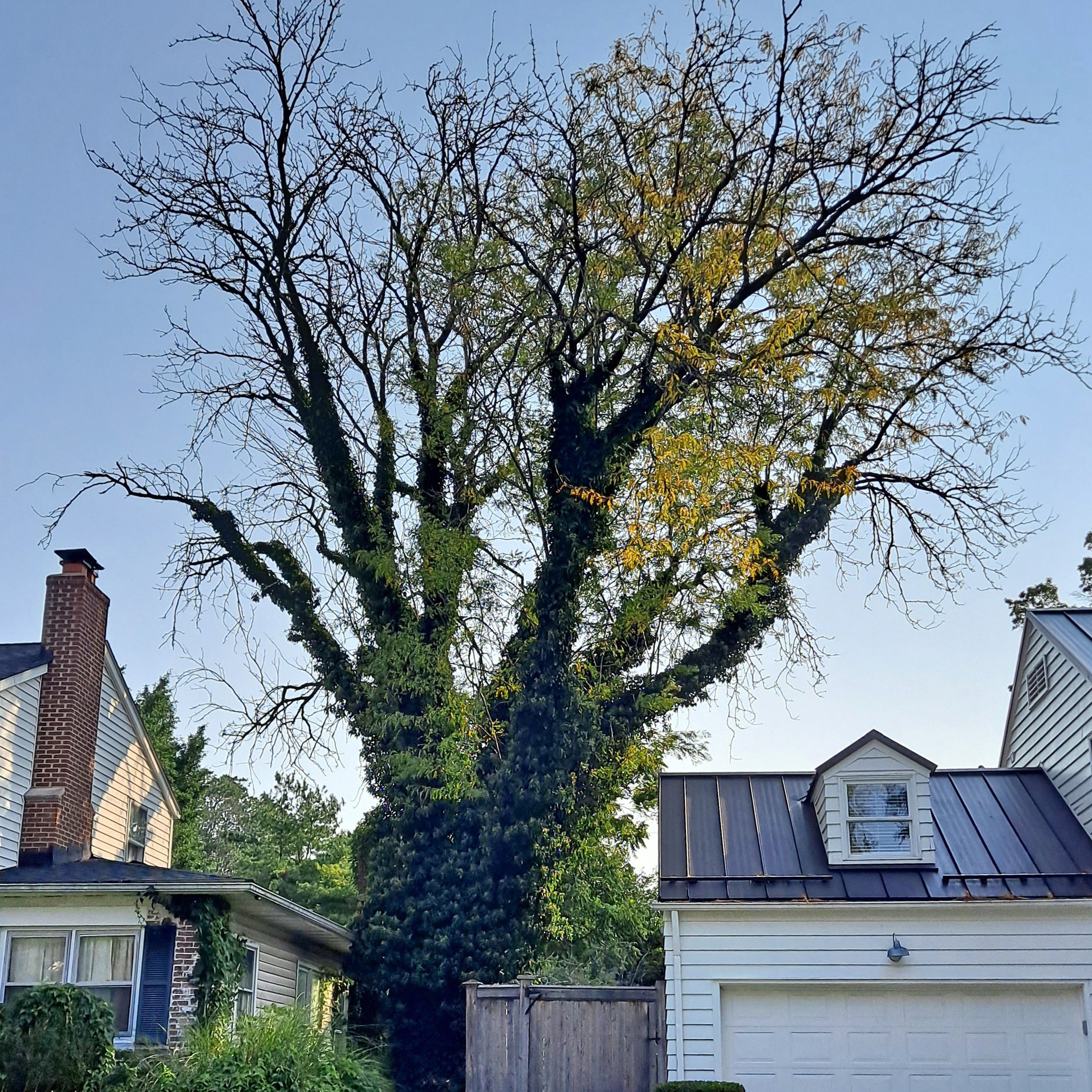Some Mites Like It Hot... Ready or Not!
By Krista Harris
ISA Certified Arborist®
July 25, 2024
As the average temperatures rise, hungry spider mites thrive! These tiny leaf suckers love hot and dry weather and are currently causing many of our beloved foundation shrubs to look sickly and even lose their leaves entirely.
Spider mites on a burning bush
Spider mite damage on burning bush (Euomymus alatus) and on boxwood (Buxus sp.) is common in the summer months. These typically dependably green shrubs will begin to take on a yellow or bronze cast when infested, and, upon closer inspection, a distinct stippling or scratched appearance of the leaves will become apparent. This characteristic pattern is caused by feeding of the mites on the undersides of the plant’s leaves. Many generations of this tiny sucker can occur per summer. A complete generation can take less than a week during 90°F temperatures and without significant rainfall. That’s a lot of babies at 100 eggs per female!
The twospotted spider mite is the species that afflicts the burning bush. These mites will also feed on many other species when available including viburnum, roses, edible plants, perennials and houseplants. In full sun conditions (especially near hardscape like driveways or brick walls) you may see their webbing binding the leaves and even tiny mites moving within the web. This species of mite overwinters as adults in leaf litter and in soil. It's important to clean up and bag any fallen leaves in the fall so that you can reduce the population of these pests before they wake up next spring.
The boxwood spider mite can only feed on boxwood species. This makes it a “host specific” species of spider mite and will not cause damage to any other plants in your landscape. This mite also differs from the twospotted spider mite in that it creates no webs, it feeds on the upper surface of the leaf as well as the bottom surface and it overwinters as eggs on the boxwood plant.
If you want to check your plants for these "pepper sized" pests or suspect you may have a growing spider mite issue, the best way is to firmly smack the twig over a white piece of paper. Look closely and you may see tiny mites crawling on the paper.
As a preventative measure, it is a great idea to give both your burning bushes and boxwoods a heavy spray with your hose nozzle. Do this twice a week in hot, dry weather (over 85°F). Concentrate on the undersides of the leaves especially to attempt to dislodge adults and eggs.
Keeping your plants watered during the summer also really helps to curb serious infestations. If plants are stressed for water, they will be much more likely to become overrun with spider mites and also insect pests like scale, aphids and lacebug.
If you would like one of our 20+ ISA Certified Arborists® to scout your landscape for spider mites and give you options to control these proliferous pests, please contact our office at (614) 895-7000 or request a free quote at RussellTreeExperts.com/Quote. We offer many options to get spider mites under control and we will help determine the best course of action for your specific trees and shrubs! Have a great summer and make sure to keep yourself watered as well!
Additional Arbor Ed Articles!
Sincerely,
Krista Harris | Journeyperson, Russell Tree Experts
Krista grew up in the central Ohio area and became an ISA Certified Arborist® in 2017. She graduated from The Ohio State University with a Bachelor of Science in Crop Science and a minor in Plant Pathology in 2000 and has been in the green industry ever since. Her favorite trees are the American sycamore, American beech, and giant sequoia. [BS in Horticulture Crop Science, The Ohio State University / ISA Certified Arborist® OH-6699A / ODA Comm. Pesticide Lic. #148078]




















